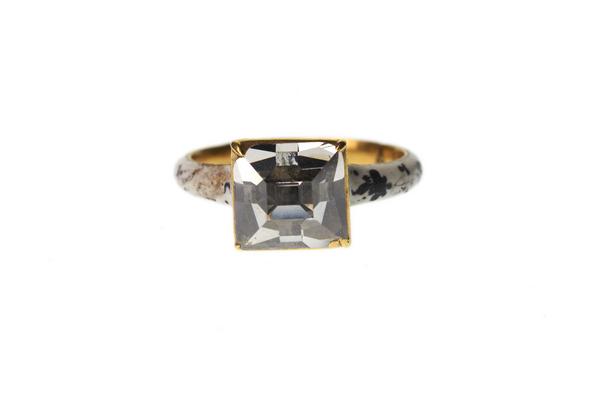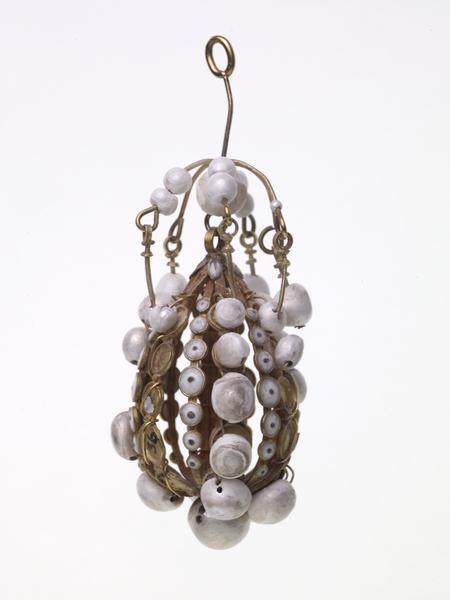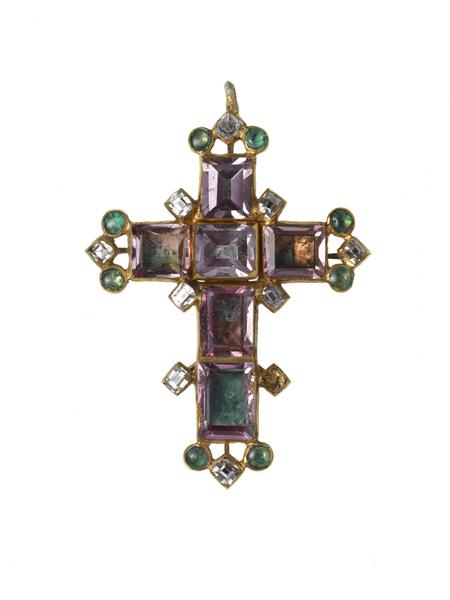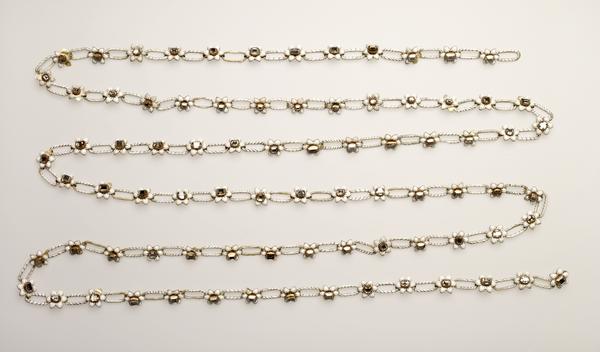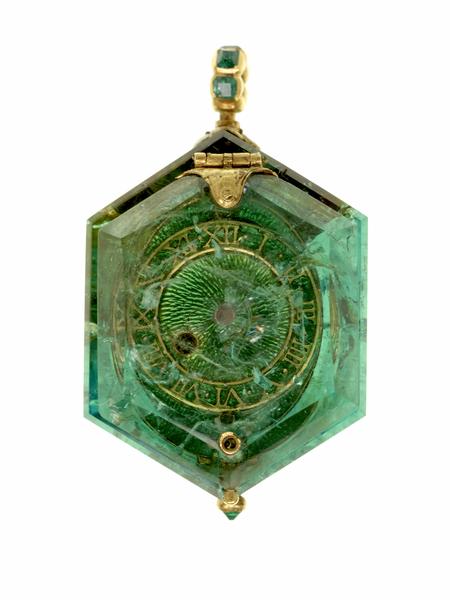The Cheapside Hoard
Discovered by workmen in 1912, the Cheapside Hoard is the greatest single collection of Elizabethan and Stuart jewellery in the world.
Cheapside, City of London
1640

Jaw-dropping jewellery lost for centuries
Buried around 1640, this hidden treasure lay undisturbed for almost 300 years below Cheapside, one of London's busiest streets.
Among the 500 pieces which sprang from the dirt were emeralds, diamonds and sapphires sourced from across the world, worked into mesmerising brooches, buttons, necklaces and rings. Most are now at London Museum.
The glittering details of the Cheapside Hoard reveal the extravagant fashions during the time of Queen Elizabeth I and King James I. It also sheds light on the complex web of London’s international jewellery trade.

This opulent gem-set bottle was used to hold perfume.
Delights in the dirt
The hoard was discovered by chance as workmen demolished a timber-framed building in Cheapside, near St Paul's Cathedral in central London in June 1912. The building had stood on the site since the 17th century, but the cellars underneath were older.
While the workmen were breaking up the cellar floor, they noticed something glinting in the soil below. They soon realised that they’d found a tangled heap of jewellery, gems and other precious objects.
They took their finds to a jewellery dealer nicknamed “Stony Jack”. He bought everything and offered the items to London Museum.

Beneath this pendant's large pearl hangs a carved sapphire showing St Thomas.
What’s in the hoard?
There are around 500 items in the hoard, including an exquisite gold watch set in a massive emerald, pendants of ripe amethyst grapes, and a salamander brooch, formed from gold, enamel and diamonds.
Other gemstones have been carved into portraits. One shows Elizabeth I. Another, which we think was made in ancient Egypt in the first century BCE, may show Cleopatra VI.

This carved stone is around 2,000 years old. It may show the Egyptian queen Cleopatra VI.
Very little jewellery from the 16th and 17th century survives, making the hoard the most important collection of its kind in the world.
We sometimes describe it as Elizabethan and Stuart jewellery because of the people who were on the English throne at the time. Elizabeth I was the last Tudor monarch. She was followed by the Stuarts, another royal dynasty which started with James I in 1603.

This gold enamelled ring holds a moonstone carved with a cute companion – a frog.
International gems
The 16th and 17th centuries were a time when European ships roamed the world seeking out new goods to trade.
European countries like England, Spain and Portugal seized areas of North and South America, the Caribbean and India to grow their empires. Europeans also shipped enslaved Africans to their colonies.
The hoard shows us one way the new horizons of trade were changing London. Among the jewellery, there are emeralds from Colombia, rubies and diamonds from India, turquoise from Persia and lapis lazuli from Afghanistan.
Who buried it?
The hoard’s location, in Cheapside, is a big clue. This street was the City of London’s ceremonial route and main shopping street. It was also the hub of the goldsmiths’ trade.
The location and the items suggest that the hoard was the stock of a goldsmith jeweller.
And why did they bury it?
This remains a mystery. We know it was probably buried around 1640, and that leads us to a couple of theories.
The Civil Wars began in 1642, and jewellers working in this area of London were affected. Someone may have buried it before going to fight. Or they may have buried it before fleeing the violence.
Whatever the answer, whoever buried the hoard never got a chance to come back for it.
Where is the Cheapside Hoard now?
The hoard was acquired by London Museum in 1912, and almost all of it is still here. There are five items in the V&A Museum and 25 in the British Museum.




